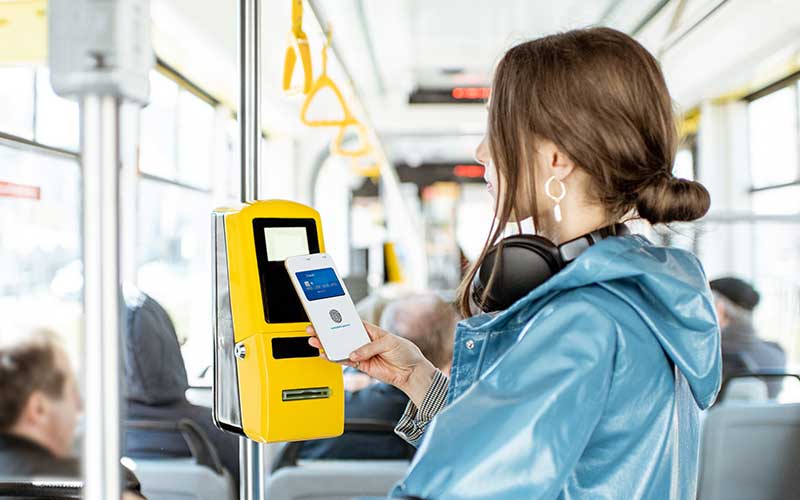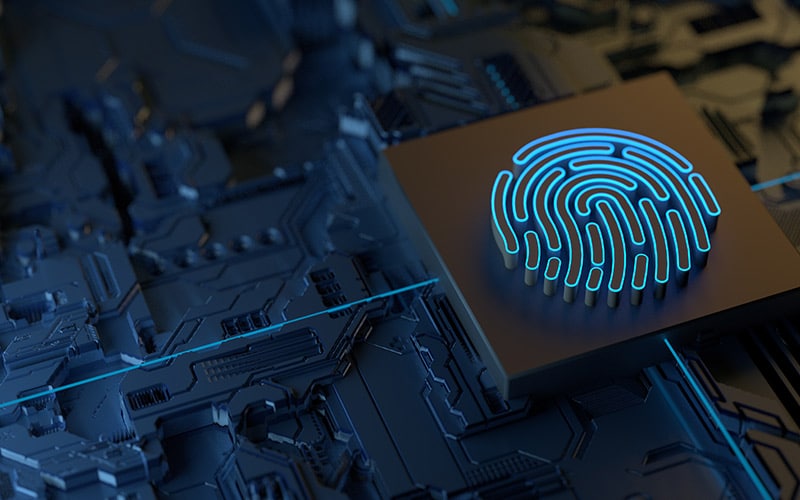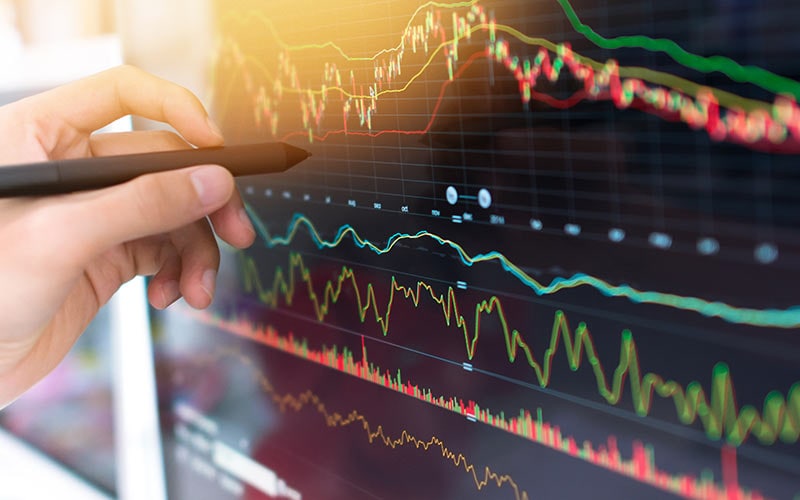COVID-19 has accelerated contactless payments. As customers look for safer, cleaner and faster ways to pay, cash and PIN-based cards have taken a backseat. Globally, banks have been slow to roll out this form of payment but will now be forced to do so faster than ever before. According to Visa, contactless payments experience among the lowest fraud rates of any type of payment, and fraud at the physical point of sale has remained at historically low levels in countries where contactless payments have been widely adopted.1

Yet at the same time, lockdowns have impacted customers’ ability to go out and spend. Merchant outlets have seen transaction volumes plummet. As economies contract with visible signs of a recession, job losses and furloughs will take over and reduce consumer income, giving rise to unsecured debt and a likely burst in delinquencies. This is all expected to weigh on banks’ cards and payments earnings as volumes fall and delinquencies increase.
In particular, airline and hotel chain co-branded cards face a higher impact in terms of a drop in portfolio spends. Private label cards also see lower spends as consumers reduce their discretionary spend and focus on categories such as food, grocery and personal hygiene. Cards that are exposed to small and medium businesses will face higher delinquencies as they are less cushioned from downturns compared with corporates. Banks that offer POS financing will take a cautious approach to new loans as they prepare for any increase in delinquencies in their existing loan portfolio.
Contactless boost
According to a Mastercard study, nearly eight in 10 customers use contactless payments and have shied away from using cash. Customers are moving to replace even small cash transactions with tap-to-pay; contactless transactions in the grocery and pharmacy categories grew more than 40% year over year globally in the first quarter of 2020. COVID-19 has made customers fond of contactless because it is safe, clean and up to 10 times faster at the POS than other in-person payment methods. It allows customers to move in and out of stores swiftly.2 As per Juniper Research, contactless payment transactions were expected to reach $2 trillion in 2021,3 but the pandemic and increased customer preference for this form of payment are expected to push these transaction volumes higher and faster.
Governments are trying to minimize interaction between people and common surfaces and have increased contactless payment limits in more than 30 countries within weeks, which would have normally taken regulators years to do. The U.K. raised contactless limits for in-store spending to £45 from £30,4 while Greece and Germany doubled the limits to €50.5 Even though research is still underway to determine whether cash is a carrier of the virus, countries have taken a cautious approach in how they treat cash; China disinfected its currency notes and isolated the notes for seven days.6
It is yet to be proven whether contactless helps prevent the spread of the virus; but if COVID-19 infection rates are considered, there appears to be some correlation, if not causation. Australia and the U.K. have higher contactless payments adoption and lower infected per million when compared with the U.S., where adoption rates have lagged behind historically.7 Yet, steps have been taken to rectify these rates; new readers are being installed with built-in contactless technology. According to Visa estimates, 78 of its top 100 merchants by transactions in the U.S. offer contactless payments.8 Of course, we need to be careful to link causation to correlation when looking at this limited data. But with COVID-19 showing signs it will stay awhile, it’s safe to assume that contactless adoption will continue at a strong pace and force laggards to speed up adoption.
Credit card crash
As the lockdowns began taking effect in March, customer spending plummeted in the absence of avenues to spend. This has hit card issuers and payment processors alike. Credit card purchase volumes at the Big 4 U.S. banks (JP Morgan Chase, Bank of America, Citi, Wells Fargo) fell an average of 14% in the first quarter of 2020 versus December 2019. Payment processors Visa and Mastercard saw purchase volumes on their credit cards fall an average of 12%, while those on debit cards fell 6%. The lockdowns have led to a significant reduction in discretionary spending, e.g., hospitality, leisure and luxury. Travel and entertainment, which are among the most impacted sectors, account for 30% of spending on American Express cards, where spending fell an alarming 95% in the first quarter of 2020.9
To minimize risks, a few banks have reduced credit limits or closed cards for almost a quarter of their credit card customers in the U.S., as per a survey.10 Discover Financial Services is known to be issuing fewer cards to new customers.11 Consumers are also being cautious with their spending habits. According to the Consumer Financial Protection Bureau, since the start of the pandemic, credit report inquiries for new credit card applications declined by 40%.12 These have all led to credit card lending declining by between 6% and 10% across the Big 4 banks in the first quarter of 2020. However, this trend is expected to reverse as unemployment rates touch levels similar to those during the Great Depression and customers dig into their credit card balances.
Retail footfall in the U.S. declined by more than 30% year over year in mid-March as stay-at-home orders came into force.13 Job losses have risen and led to more than 33.5 million people filing for unemployment benefits in the U.S.14 Furloughs and reduced work hours have impacted income sources and bank accounts have depleted, leading to a rise in credit card debt as spending on essentials continues. A survey revealed that the number of people with credit card debt has increased to 47% in mid-April from 43% since early March 2020.15 The government’s $2 trillion relief package is expected to ease the addition of debt, but this will take time to feed through the system and there are still concerns that it will not be enough to avoid a debt crisis.
A rise in bad loans is expected and banks have already begun reinforcing themselves with billions of dollars. The top 5 U.S. banks have amassed more than $24 billion in loan-loss provisions to help withstand the aftermath of the crisis.16
Figure 1. Credit card purchase volumes declined in the quarter ended March 2020 across banks and payment processors
Act fast – digitize and survive
Cards and payments competitiveness in the future is going to be based on speed and ease — speed and ease of approving credit, and speed and ease of making payments.
As the adoption of contactless expands, the move to digital wallet applications that are linked to a mobile phone is inevitable. And few companies have drawn first blood — the iPhone, Samsung Galaxy and Google Pixel are some phones that offer near-field communication, which supports digital wallets such as Apple Pay, Samsung Pay and Google Pay.17
Firms will compete on speed and ease of approving credit and making payments
NFC allows the cardholder to pay using their mobile phone and avoid touching the POS machine. And card issuers are going out of their way to increase their adoption. For example, eligible customers can get an American Express credit card approval in under 30 seconds. Card details are shared immediately after authentication.18 The customer can feed in the card details in the NFC wallet and begin transacting immediately online, and offline using a mobile phone. This is even before the physical card reaches the customer days later. In the absence of banking and delivery services, banks that support NFC mobile payments stand to benefit as this can reduce the cost of plastic issuance and delivery.
To counter the cost, maintenance and hassles of another piece of hardware, the startup xPressTap has launched a payment platform that simplifies POS. The platform enables transactions by tapping a simple chip card on the merchant’s mobile phone.19
Institutions must be able to onboard customers quickly, yet spot creditworthy customers to manage risk
As the ensuing recession bites and credit applications increase, banks need to onboard customers faster and at the same time identify quality customers in order to reduce risk. Traditionally, banks would look at FICO scores to judge a customer’s ability to repay. But today, banks leverage artificial intelligence and machine learning to combine traditional and nontraditional data sets to assess credit scores. Nontraditional data sets include a prospective customer’s social media activity, residential location, education and financial standing. Alternatively, it could also include utility payment history, mobile recharges and digital payments made.
Companies like SoFi and Aire break from the tendency to look backward into the past and instead use forward-looking indicators to assess the creditworthiness of borrowers. SoFi considers factors such as the borrower’s education, including graduating university, field of study and type of job. Aire goes beyond just transactional banking data, incorporating each borrower’s finances, profession and lifestyle into its assessment; at the back end, the company’s artificial intelligence system analyzes and scores borrowers.20
Card issuers need to put in place early warning systems for collections to predict customers that are most likely to default. They need to design their collections strategy to handle the increased number of accounts that enter the collections workflow.
With delinquencies set to rise, banks have begun to take a proactive approach to follow up with customers on dues and are relying on robotic process automation to help take on the added volume. State Bank of India Cards, for example, has leveraged RPA to automate the follow-up process under chargebacks for disputed transactions. The RPA bot automates customer follow-ups to collect evidence and inputs for proper classification of disputes. SBI Cards has benefited from the reduction of 700 man-hours of effort per day due to the RPA initiative.21
Even as banks adopt a cautious approach, COVID-19 will speed up trends that would have eventually materialized. Similar to how Africa leapfrogged cards into mobile payments, we could see the U.S. leaping into the tapping of phone and wearable payments. Acceleration in innovation will continue as customers expect banks to learn to innovate and digitize from other industries. A proactive approach to the adoption of newer technology, frictionless payments and digitization will help them stay resilient and relevant.
References
- Visa applauds the move to temporarily raising the contactless payments limit in Australia, Julian Potter, April 7, 2020, Visa
- Mastercard study shows consumers moving to contactless payments for everyday purchases as they seek cleaner, touch-free options , April 29, 2020, Mastercard
- CONTACTLESS RETAIL PAYMENTS TO EXCEED $1 TRILLION IN TRANSACTION VALUE BY 2019 , May 15, 2017, Juniper Research
- Brits to use contactless payments for bigger purchases as retailers fight coronavirus , Amy Woodyatt, March 24, 2020, CNN Business
- Mastercard enables Contactless limit raise across 29 countries; and champions permanent increase , March 25, 2020, Mastercard,
- China orders disinfection of banknotes in coronavirus fight: Report , February 26, 2020, The Economic Times
- Contactless cards have arrived in the US, and networks are betting on transit to drive adoption. We asked execs at Mastercard, Amex, and Visa why it took so long , Shannen Balogh, December 14, 2019, Business Insider
- Contactless Payments: Global Highlights , Visa
- Amex says travel and leisure spending by cardholders fell 95% , Martin Joseph, April 24, 2020, Thakoni
- 1 In 4 US Cardholders Saw Credit Limit Cut Over The Last Month , May 4, 2020, PMYNTS
- Survey: Americans rack up more credit card debt amid pandemic , Denitsa Tsekova, May 4, 2020, Yahoo Money
- The Early Effects of the COVID-19 Pandemic on Credit Applications , April 2020, Consumer Financial Protection Bureau
- The Impact Of COVID-19 On U.S. Brands And Retailers , Jason Goldberg, March 29, 2020, Forbes
- Pandemic shows contrasts between US, European safety nets , David McHugh, May 11, 2020, Bellefontaine Examiner
- Poll: 23% of consumers added to their card debt during the pandemic , Barri Segal, May 4, 2020, Creditcards.com
- The biggest US banks have stashed away $24 billion to prepare for a wave of losses , John Detrixhe, April 15, 2020, Quartz
- Safe shopping: Your best options for NFC and contactless payments , Jason Perlow, April 24, 2020, ZD Net
- Don't wait for your Card in the mail. Get started now with Instant Card Number , American Express
- United States Contactless Payment Market Analysis, 2019-2025 , April 16, 2020, PR Newswire
- Improving Mortgage Customer Experience , Anu Beri, Samad Masood, Sharan Bathija, November 2019, Infosys Ltd
- Global trends in the cards and payments industry 2020 , Rajneesh Malviya, Ashok Hegde, Vijay Anand, et all., March 2020, Infosys Ltd






